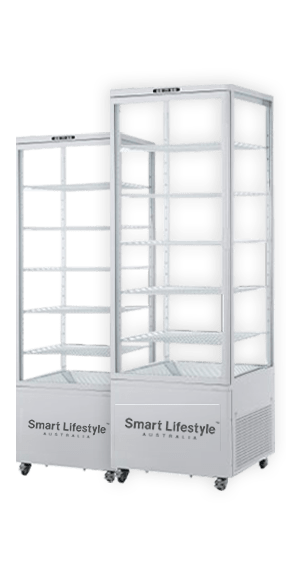Food waste is a significant global issue that has far-reaching environmental, economic, and social implications. In Australia, where food waste accounts for a considerable portion of the overall waste generated, innovative solutions are being implemented to tackle this problem. One such solution is the use of refrigerated display cabinets. These cabinets, commonly found in supermarkets, cafes, and restaurants, not only showcase food products but also play a vital role in reducing food waste.
In this blog, we will explore the top ways in which refrigerated display cabinets (RDCs) are helping to combat food waste in Australia.
Why is there a Food Waste Problem Across Australia?
There are several reasons contributing to the food waste problem across Australia.
Firstly, overproduction and oversupply are significant factors. The country’s food system often operates on the basis of producing more food than is actually consumed or needed to meet demand. Farmers, producers, and retailers generate surplus food that cannot be effectively utilized or distributed, resulting in waste.
Secondly, consumer behavior and food choices play a significant role in food waste. Practices such as purchasing more food than necessary, improper storage, and discarding edible food due to aesthetic imperfections or expiration dates contribute to the problem. Changing dietary preferences, where consumers demand a wider variety of fresh produce, can also lead to increased waste if the entire supply chain is not effectively managed.
Furthermore, inefficiencies within the food supply chain and distribution contribute to food waste. Challenges such as inadequate storage facilities, improper handling, and inefficient transportation can result in spoilage, damage, or expiration of food items before they reach consumers.

The lack of education and awareness about the implications of food waste is another contributing factor. Many individuals and businesses may lack awareness or understanding of proper food handling, proper food storage, and utilization, as well as the environmental and social impacts of waste. This knowledge gap can lead to higher levels of food waste.
Food industry practices and standards also contribute to the problem. Strict cosmetic standards that reject produce with minor imperfections and overly cautious food safety practices, such as premature discarding of food items based on conservative expiration dates, can lead to avoidable waste.
Additionally, the lack of infrastructure for food recovery and redistribution hinders efforts to divert surplus food to those in need. Insufficient facilities for storage, transportation, and processing make it challenging for businesses to effectively donate or redistribute excess food.
Lastly, the absence of comprehensive policies and regulations specifically addressing food waste can impede progress in reducing waste across the food system. Without clear guidelines and incentives for waste reduction, businesses may be less motivated to adopt sustainable practices.
Addressing the food waste problem in Australia requires collaborative efforts from all stakeholders involved in the food supply chain. By implementing effective strategies and initiatives focused on prevention, reduction, and diversion of food waste, Australia can work towards a more sustainable and efficient food system.
Refrigerated Display Cabinets Reduce Food Waste
Each week, Australians discard one full bag of groceries, or 312 kilograms, each person. (Source)
That says a lot about how food wastage is a major issue in our country and there has to be ways to tackle this problem. One of the significant ways to help reduce food wastage is having the food refrigerated while also keeping it accessible to the customers and maintain the aesthetic appeal.
There is no better way to this approach than to install RDCs in different business premise. To still keep the food items on display and to avoid food spoilage in the process.
Here are some ways RDCs help reduce food waste in Australia-
- Extended Shelf Life and Preservation

- Improved Visibility and Freshness
- Optimal Stock Rotation and Inventory Management
- Temperature Monitoring and Control
- Donation and Food Recovery Programs
- Enhanced Product Organization and Visibility
- Portion Control and Reduced Over-Serving
- Transparent Communication of Expiry Dates

- Energy Efficiency and Sustainable Design
Modern refrigerated display cabinets are designed with energy efficiency in mind. They incorporate advanced insulation materials, LED lighting systems, and energy-efficient compressors, which collectively reduce energy consumption. By utilizing less energy, these cabinets contribute to overall sustainability efforts and help reduce the environmental impact associated with food storage and preservation. Moreover, some models may also incorporate features like night curtains or doors that can be closed during non-operational hours, further minimizing energy usage.
- Data Analytics for Demand Forecasting
Refrigerated display cabinets equipped with data analytics capabilities can gather valuable insights regarding customer preferences and buying patterns. By analyzing this data, businesses can better understand consumer demand and optimize their inventory management accordingly. This knowledge enables them to stock the right quantities of food items, reducing the likelihood of excess inventory and subsequent waste. Additionally, data analytics can aid in predicting peak periods and seasonal trends, allowing businesses to adjust their offerings and minimize potential overproduction or spoilage.
- Collaboration with Food Waste Reduction Initiatives
Refrigerated display cabinet manufacturers, businesses, and government organizations can collaborate with food waste reduction initiatives in Australia. By working together, they can develop and implement strategies that align with national goals to reduce food waste. This collaboration may involve initiatives such as sharing best practices, conducting awareness campaigns, and supporting research and development efforts to further improve the effectiveness of refrigerated display cabinets in waste reduction.








